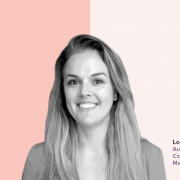Last Updated on: 15th December 2023, 03:11 pm
For years, brands and agencies have been using third-party cookies to track website visitors’ behavior, improve the user experience, and collect trending martech data from across the web to optimize audience targeting strategies. However, this year Google announced that it would be joining Firefox and Safari in removing third-party cookies from its Chrome browser by 2023, ultimately changing the future of advertising. Marketers across the world have spent the last 12 months digesting, understanding, and preparing for this change. In this article, Julie Keating, VP of Digital Marketing and Media at Havas Edge, shares her journey from first hearing Google’s announcement to change the future of advertising, to recent learnings from campaigns that have used cookieless targeting solutions.
In this article you will learn:
- What challenges for agencies might the withdrawal of 3rd-party cookies cause
- How do agencies prepare themselves for the changes and the impact of those changes
- What opportunities can withdrawing 3rd-party cookies open up for agencies
Table of Contents:
- From fear to excitement
- Getting to grips with cookieless targeting
- The future’s bright
- How RTB House can help
From fear to excitement
Like many, Julie Keating’s first thoughts were that the removal of third-party cookies would be a blow to the industry that would make the walled gardens even bigger. She worried about ad tech and martech companies being unable to survive resulting in fewer companies in the ecosystem and thus a lack of competition, innovation, and progress.

These fearful thoughts were quickly replaced with feelings of excitement as she began to see an opportunity to bring more creativity back to digital. “The prevalence of third-party cookies meant that data was very easy to access, which made short-term campaign execution simple, but as a result, we lost the creativity and advertising strategy that makes advertising exciting,” said Keating. “We had all this data with no unifying strategy behind it. I think now it is a time of change and a wake-up call to transform short-term executions into long-term advertising and data strategies.”
From a publisher perspective, the rise of programmatic and data-driven audiences resulted in a loss of contextual synergy, sponsorships, and ideation. “Initially, I was concerned that independent publishers would lose significant amounts of revenue, but now I think of it as a great opportunity to re-establish the importance of contextual advertising,” Keating commented. Ultimately, Keating shares RTB House’s view that the removal of cookies from the digital advertising ecosystem is an opportunity to shift to a more mindful and purposeful approach to the use of data in building long-term strategies for the future of advertising.
Getting to grips with cookieless targeting
Google’s delay of phasing out third-party cookies from Chrome has given marketers more time to prepare, but Keating cautions that because this has been a moving target “it is important to stay on top of the news and partner with publishers and technology companies to understand the different approaches and options available.” The extended timeline has afforded marketers the opportunity to create new, long-standing, internal changes to processes, test, and cultivate long-term strategies rather than pursue a race to the end.
The digital teams at Havas have been evaluating technology partners and martech trends to establish who has a distinct cookieless targeting strategy and those that are emerging as leaders in the space. “We have kicked off several test campaigns and recommended a deep-dive into our client’s data strategy for 2023.” said Keating who describes the next 12 months as “a testing ground to explore and prepare for the finite changes in 2023.” Havas has also been looking at developing deep partnerships with individual publishers to guide the transition to modern contextual targeting strategies. Early testing has shown efficiencies and an increase in brand recall and awareness.
Good to know: What is the Future of Digital Advertising and why is it Video?
The future’s bright

Blessed with a wealth of experience in martech trends, Keating has the benefit of having been a driving force behind many positive changes in digital advertising. “Throughout my career, I have seen many times how resilient and growth-focused the digital advertising industry is. I believe that challenges like this pave the way for growth and that once again the industry will rise to the occasion and innovate for success.” Over the past 12 months, marketers have done a great job of steadying the ship and creating a level playing field that will give rise to more creativity, more impactful marketing, and a more mature industry.
We asked Keating to share with us three wishes she has for 2022, here’s what she had to say.
- A scalable, cohesive solution with full industry buy-in
- No more negativity around data privacy or demonizing of digital advertising
- A return to digital creativity through embracing contextual targeting and placing a greater emphasis on publisher partnerships
How RTB House can help
At RTB House we strongly believe that research and innovation are key to developing scalable, effective marketing technology solutions. Our dedicated AI Marketing LAB provides an environment for inventing and advancing marketing technology products. Simultaneously our Creatives LAB investigates and improves the overall performance of creatives, as well as developing support for formats like dynamic display and video creatives.
All our solutions can be ultra-tailored to individual requirements meaning that we are able to provide agencies like Havas with strategic support for the strategies that they develop for their clients.
If you have any questions regarding the article and our solutions, please let us know.
















